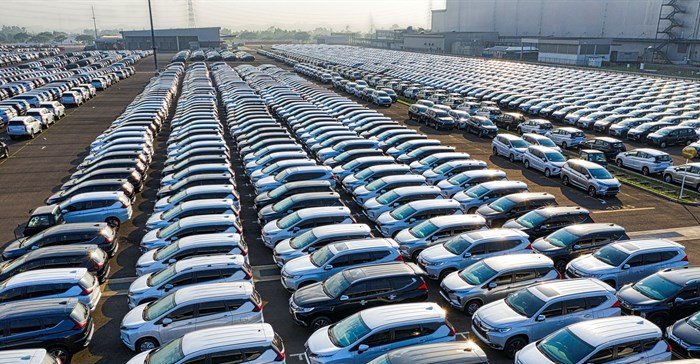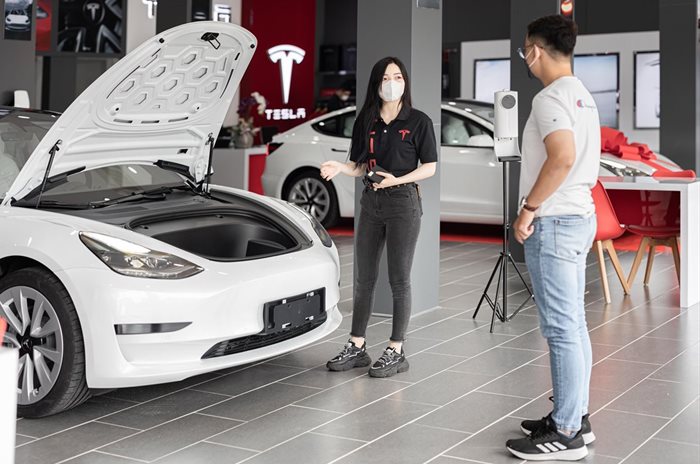Cars are quickly becoming rolling computers that require many microchips to power the various electronic functions. And in a world transitioning to battery electric vehicles (BEV), carmakers cannot differentiate on pure performance because everyone is user similar motors and getting similar on-road performance.

Automotive manufacturing returning to previous levels. Source: Pexels
As demand for cars fell during the global pandemic, the technology development was not prioritised and orders for the semiconductor chips fell behind. Then, when demand ramped up again, automakers were way behind in the queue and faced the worst of the global chip shortage.
At its height, this shortage managed to slow car production by 26% during the first nine months of 2021.
“2023 should mark a strong earnings year for the industry, with less volatile raw material costs and a more stable supply chain,” said Jose Asumendi, head of European automotive research at JP Morgan in the company’s 2023 industry report.
“Raw material headwinds will slow, eventually providing a tailwind sometime in the second half of 2023. Overall, we predict a strong year for the autos sector, with global car production up 3% year-over-year.”
Semiconductor arms race
As the auto industry’s demand for semiconductors accelerates, major manufacturers like Stellantis are implementing a multifaceted strategy designed to manage and secure the long-term supply of vital microchips.
The Stellantis strategy was developed by a cross-functional team through a rigorous assessment of customer desires for advanced technology features and a keen focus on delivering the objectives laid out in thecompany’s Dare Forward 2030 plan.
It’s a combination of establishing a transparent database of semiconductors, proactively removing legacy parts and long term demand forecasting. This is coupled with a new purchasing plan for critical parts directly from suppliers like NXP, Qualcomm and Infineon.
“An effective semiconductor strategy requires a deep understanding of semiconductors and the semiconductor industry,” said Maxime Picat, chief purchasing and supply chain officer at Stellantis.
“We have hundreds of very different semiconductors in our cars. We have built a comprehensive ecosystem to mitigate the risk that one missing chip can stop our lines. At the same time, key vehicle capabilities directly depend on the innovation and performance of single devices. SiC MOSFETS extend the range of our electric vehicles while the computation performance of a leading-edge SoC is essential for the customer experience and safety.”
Hand-to-hand combat
Ford Motor Company attributed its disappointing fourth quarter 2022 earnings to the chip shortage that resulted in a 100,000 unit production shortfall over the reporting period.
"We're going to see in 2023, there is still going to be volatility around chips," Ford CFO John Lawler said on the earnings call in February.
"I know there's been a lot of discussion about 'Well, the chip supply issue is over,' but on the larger, older nodes that are primarily the chips we use in the auto industry there is still capacity constraints."
"We're working to get access to as much as we can through the spot market and the broker market," he added. "It's hand-to- hand combat."
When the chipmakers shifted production to concentrate on the increased demand for consumer electronics as people were buying laptops to work from home, Ford responded quickly by striking a deal with GlobalFoundries to develop new chip designs.
The 2021 deal came shortly after a 27% year-on-year drop in sales.
Supply is increasing
Tesla, by contrast, had long developed its own semiconductors, but took a massive hit to production volumes when the company was forced to close the Shanghai factory due to lockdowns.
“The past few years have been quite a few force majeures and it’s been kind of supply chain hell for several years,” Elon Musk admitted after a bumper second quarter in 2022 after Shanghai came back online.
“But in spite of all these challenges, it was one of the strongest quarters in our history. Most importantly, in June, we achieved production records in both Fremont and Shanghai. And as a result, we have the potential for a record-breaking second half of the year.”
A year later and Tesla is a in a comfortable enough position to induce demand by cutting prices – after seeing a dip in sales due to the US ending its tax credit plan on EVs.
Semiconductor supply is now regularly meeting demand and it seems that the car manufacturers have learnt valuable lessons about hardening supply chains.






































